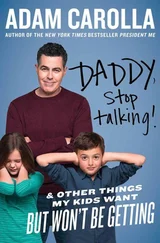“Rule Number 1,” she says. “If you break the laws, you miss recess.…”
“Wait!” interrupts Maya. “I have an idea!”
“Go ahead,” says Samantha, a little impatiently. But Maya, who like many sensitive introverts seems attuned to the subtlest cues for disapproval, notices the sharpness in Samantha’s voice. She opens her mouth to speak, but lowers her eyes, only managing something rambling and unintelligible. No one can hear her. No one tries. The cool girl in the group—light-years ahead of the rest in her slinkiness and fashion-forward clothes—sighs dramatically. Maya peters off in confusion, and the cool girl says, “OK, Samantha, you can keep reading the rules now.”
The teacher asks the executive branch for a recap of its work. Everyone vies for airtime. Everyone except Maya. Samantha takes charge as usual, her voice carrying over everyone else’s, until the rest of the group falls silent. Her report doesn’t make a lot of sense, but she’s so confident and good-natured that it doesn’t seem to matter.
Maya, for her part, sits curled up at the periphery of the group, writing her name over and over again in her notebook, in big block letters, as if to reassert her identity. At least to herself.
Earlier, Maya’s teacher had told me that she’s an intellectually alive student who shines in her essay-writing. She’s a gifted softball player. And she’s kind to others, offering to tutor other children who lag behind academically. But none of Maya’s positive attributes were evident that morning.
* * *
Any parent would be dismayed to think that this was their child’s experience of learning, of socializing, and of herself. Maya is an introvert; she is out of her element in a noisy and overstimulating classroom where lessons are taught in large groups. Her teacher told me that she’d do much better in a school with a calm atmosphere where she could work with other kids who are “equally hardworking and attentive to detail,” and where a larger portion of the day would involve independent work. Maya needs to learn to assert herself in groups, of course, but will experiences like the one I witnessed teach her this skill?
The truth is that many schools are designed for extroverts. Introverts need different kinds of instruction from extroverts, write College of William and Mary education scholars Jill Burruss and Lisa Kaenzig. And too often, “very little is made available to that learner except constant advice on becoming more social and gregarious.”
We tend to forget that there’s nothing sacrosanct about learning in large group classrooms, and that we organize students this way not because it’s the best way to learn but because it’s cost-efficient, and what else would we do with our children while the grown-ups are at work? If your child prefers to work autonomously and socialize one-on-one, there’s nothing wrong with her; she just happens not to fit the prevailing model. The purpose of school should be to prepare kids for the rest of their lives, but too often what kids need to be prepared for is surviving the school day itself.
The school environment can be highly unnatural, especially from the perspective of an introverted child who loves to work intensely on projects he cares about, and hang out with one or two friends at a time. In the morning, the door to the bus opens and discharges its occupants in a noisy, jostling mass. Academic classes are dominated by group discussions in which a teacher prods him to speak up. He eats lunch in the cacophonous din of the cafeteria, where he has to jockey for a place at a crowded table. Worst of all, there’s little time to think or create. The structure of the day is almost guaranteed to sap his energy rather than stimulate it.
Why do we accept this one-size-fits-all situation as a given when we know perfectly well that adults don’t organize themselves this way? We often marvel at how introverted, geeky kids “blossom” into secure and happy adults. We liken it to a metamorphosis. However, maybe it’s not the children who change but their environments. As adults, they get to select the careers, spouses, and social circles that suit them. They don’t have to live in whatever culture they’re plunked into. Research from a field known as “person-environment fit” shows that people flourish when, in the words of psychologist Brian Little, they’re “engaged in occupations, roles or settings that are concordant with their personalities.” The inverse is also true: kids stop learning when they feel emotionally threatened.
No one knows this better than LouAnne Johnson, a tough-talking former marine and schoolteacher widely recognized for educating some of the most troubled teens in the California public school system (Michelle Pfeiffer played her in the movie Dangerous Minds ). I visited Johnson at her home in Truth or Consequences, New Mexico, to find out more about her experience teaching children of all stripes.
Johnson happens to be skilled at working with very shy children—which is no accident. One of her techniques is to share with her students how timid she herself used to be. Her earliest school memory is of being made to stand on a stool in kindergarten because she preferred to sit in the corner and read books, and the teacher wanted her to “interact.” “Many shy children are thrilled to discover that their teacher had been as shy as they were,” she told me. “I remember one very shy girl in my high school English class whose mother thanked me for telling her daughter that I believed she would peak much later in life, so not to worry that she didn’t shine in high school. She said that one comment had changed her daughter’s entire outlook on life. Imagine—one offhand comment made such an impact on a tender child.”
When encouraging shy children to speak, says Johnson, it helps to make the topic so compelling that they forget their inhibitions. She advises asking students to discuss hot-button subjects like “Boys have life a lot easier than girls do.” Johnson, who is a frequent public speaker on education despite a lifelong public speaking phobia, knows firsthand how well this works. “I haven’t overcome my shyness,” she says. “It is sitting in the corner, calling to me. But I am passionate about changing our schools, so my passion overcomes my shyness once I get started on a speech. If you find something that arouses your passion or provides a welcome challenge, you forget yourself for a while. It’s like an emotional vacation.”
But don’t risk having children make a speech to the class unless you’ve provided them with the tools to know with reasonable confidence that it will go well. Have kids practice with a partner and in small groups, and if they’re still too terrified, don’t force it. Experts believe that negative public speaking experiences in childhood can leave children with a lifelong terror of the podium.
So, what kind of school environment would work best for the Mayas of the world? First, some thoughts for teachers:
Don’t think of introversion as something that needs to be cured. If an introverted child needs help with social skills, teach her or recommend training outside class, just as you’d do for a student who needs extra attention in math or reading. But celebrate these kids for who they are. “The typical comment on many children’s report cards is, ‘I wish Molly would talk more in class,’ ” Pat Adams, the former head of the Emerson School for gifted students in Ann Arbor, Michigan, told me. “But here we have an understanding that many kids are introspective. We try to bring them out, but we don’t make it a big deal. We think about introverted kids as having a different learning style.”
Studies show that one third to one half of us are introverts. This means that you have more introverted kids in your class than you think. Even at a young age, some introverts become adept at acting like extroverts, making it tough to spot them. Balance teaching methods to serve all the kids in your class. Extroverts tend to like movement, stimulation, collaborative work. Introverts prefer lectures, downtime, and independent projects. Mix it up fairly.
Читать дальше
![Сьюзан Кейн Quiet [The Power of Introverts in a World That Can't Stop Talking] обложка книги](/books/33084/syuzan-kejn-quiet-the-power-of-introverts-in-a-wo-cover.webp)











